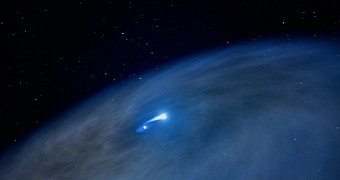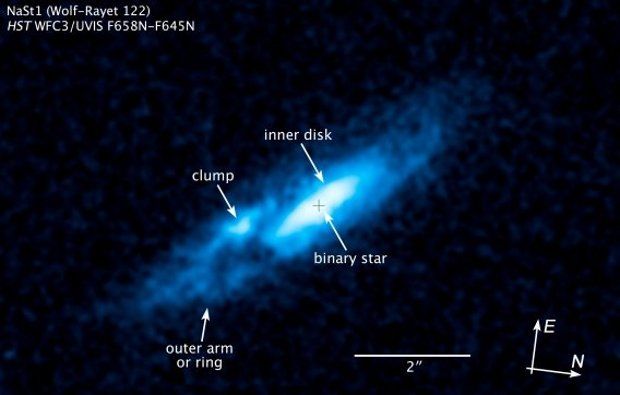A report published in the science journal Monthly Notices of the Royal Astronomical Society this past Thursday, May 21, describes an odd star that researchers say has never before been observed in our home galaxy, the Milky Way.
The star, whose official name is NaSt1 but that astronomers like to call “Nasty 1,” was recently studied in detail with the help of NASA's Hubble Space Telescope, and scientists believe to have figured out how it acquired its peculiar anatomy.
The star appears to be the result of cosmic cannibalism
Writing in the journal Monthly Notices of the Royal Astronomical Society, astronomers explain that NaSt1 was first documented a few decades back, when it was identified as a so-called Wolf-Rayet star, i.e. a massive star shedding its outer layers at a rapid pace.
When they got around to observing it using NASA's Hubble Space Telescope, however, scientists found that NaSt1 looked nothing like other Wolf-Rayet orbs. Thus, as illustrated in the image below, they documented a massive disk of gas around it.
Hubble Space Telescope data indicates that this gas nebula around NaSt1 measures about 2 trillion miles (some 3.2 trillion kilometers) across. It is believed that the pancake-shaped disk formed when a nearby star consumed the hydrogen-filled outer layers lost by NaSt1.
More precisely, scientists suspect that the disk comprises gas that NaSt1's companion pulled away from the Wolf-Rayet star but failed to incorporate into its makeup and instead spilled all around the binary system, creating the massive cloud.
“We think there is a Wolf-Rayet star buried inside the nebula, and we think the nebula is being created by this mass-transfer process. So this type of sloppy stellar cannibalism actually makes Nasty 1 a rather fitting nickname,” said researcher Jon Mauerhan.
NaSt1's hungry companion will one day become visible
For now, the mammoth disk of gas and dust encircling NaSt1 makes it impossible to sneak a peek inside this cosmic structure and try to find the star's cannibalistic companion suspected of having created all this mess.
Still, astronomers say that, when NaSt1 runs out of outer layers to shed thousands of years from now and the cloud engulfing it clears out, we might get to have a look at its neighbor.

 14 DAY TRIAL //
14 DAY TRIAL // 

